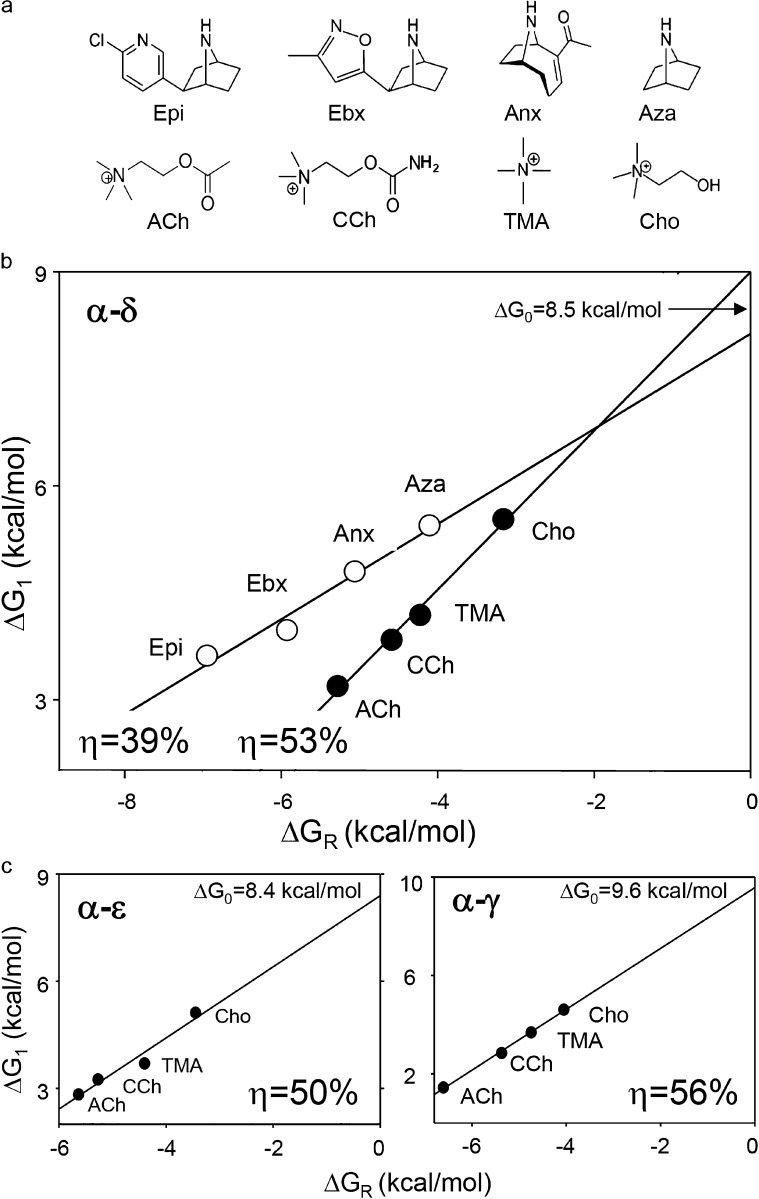Figure 3.
Efficiency plots for human AChR-binding sites. (a) Agonists. Epi, epibatidine; Ebx, epiboxidine; Anx, anatoxin; Aza, azabicycloheptane; ACh, acetylcholine; CCh, carbamylcholine; TMA, tetrmethylammonium; Cho, choline. (b) Efficiency plot for the AChR α−δ neurotransmitter binding site. The y-axis is the gating free energy change and the x-axis is the binding free energy change. The line is the fit by Eq. 3, with energy efficiency (η) calculated from the slope and intrinsic gating energy (ΔG0) from the y intercept. ACh-class agonists are more efficient than Epi-class agonists. (c) Efficiency plots for α−ε and α−γ sites. ACh-class agonists are most efficient at α−γ. The intrinsic gating energy of adult-type AChRs (with an ε subunit) is less positive (more favorable) than of fetal-type (with a γ subunit) AChRs.

